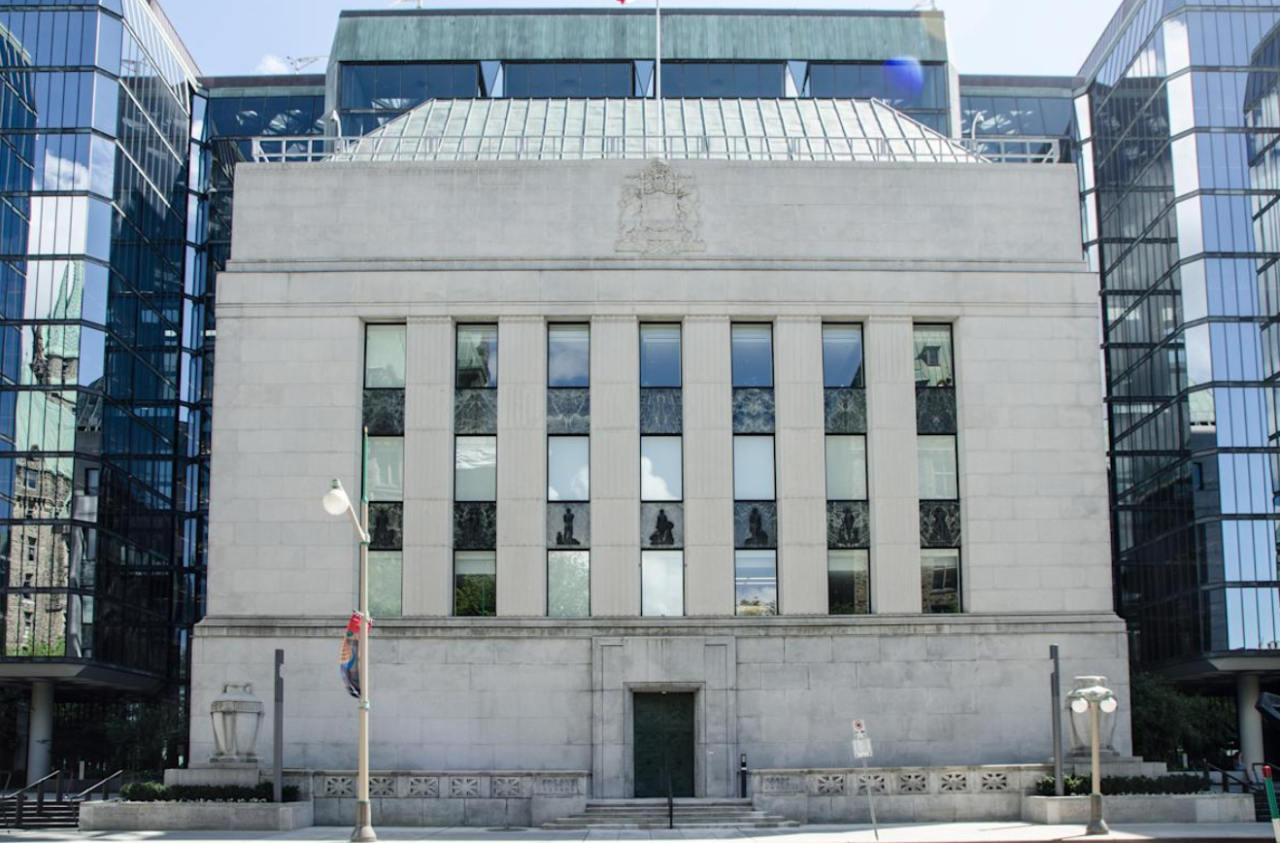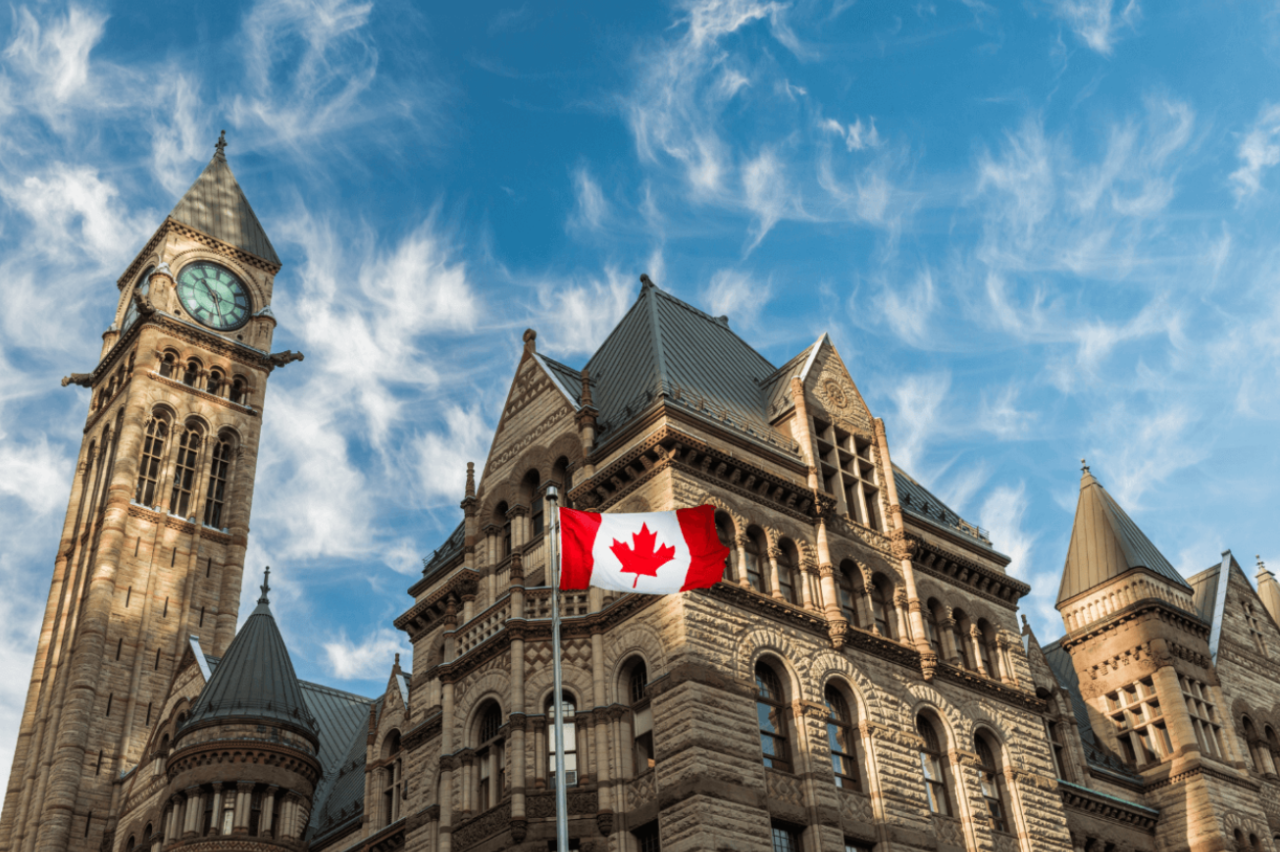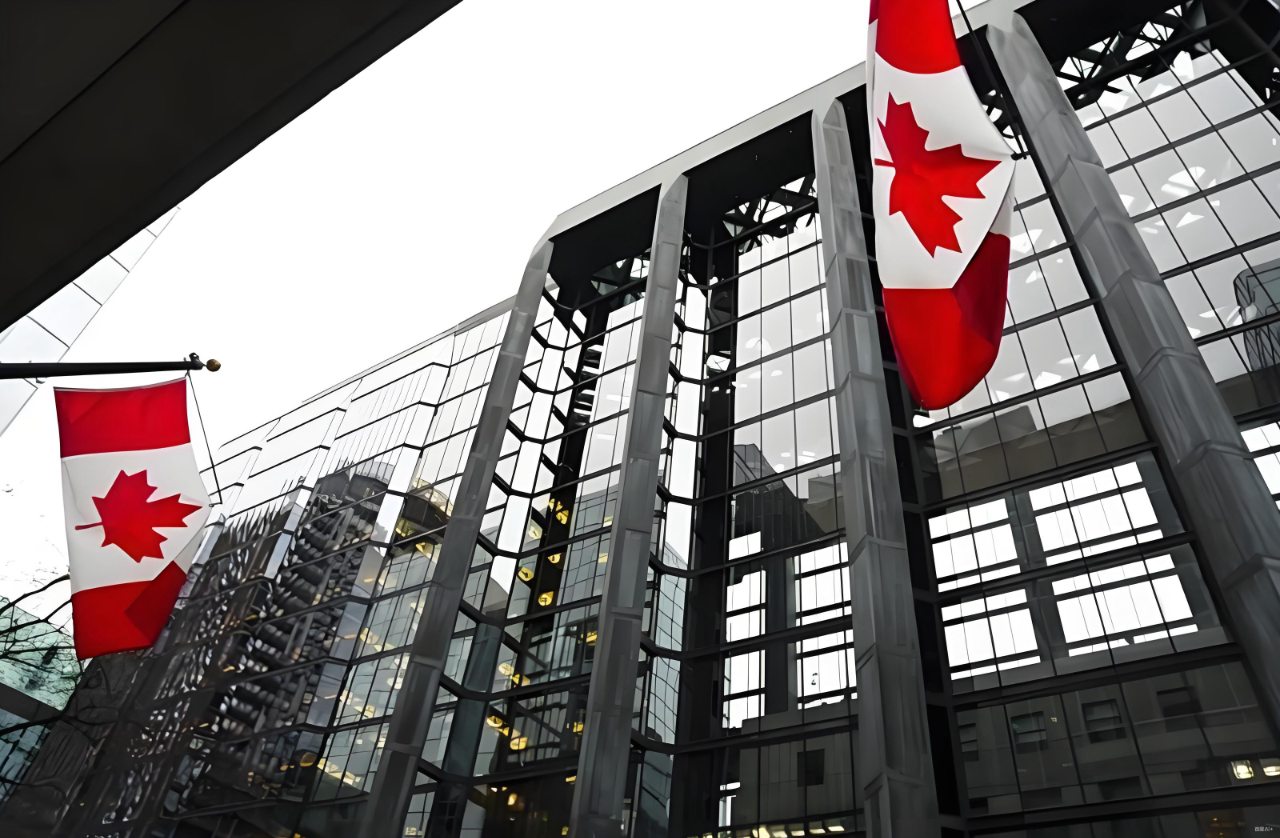Author: Liang Yu
Editor: Zhao Yidan
"The application of stablecoins in cross-border payments and daily transactions is gradually becoming mainstream," admitted Ron Moro, Deputy Governor of the Bank of Canada, in a public speech in September. "However, the serious fragmentation of regulation across our provinces may affect financial stability and innovation efficiency." He called for the acceleration of clear regulations to ensure that Canada does not fall behind in the modernization of payment systems.
Two months later, this call received substantial response. According to a report by Sina Finance on November 5, the Canadian government announced that it would introduce a regulatory framework for fiat-backed stablecoins in the 2025 federal budget, becoming one of the first countries in the G7 to establish a comprehensive regulatory system for stablecoins.
Tetra Trust, a digital asset custodian in Alberta, Canada, is actively preparing to issue a regulated stablecoin pegged 1:1 to the Canadian dollar after receiving approval from regulatory authorities. This initiative has garnered support from several Canadian tech and financial giants, including Shopify.
In the global race for the tokenization of Real World Assets (RWA), Canada is building a multi-layered, sector-specific regulatory framework that provides an orderly development space for RWA innovation while ensuring financial stability and investor protection.

This North American country, rich in natural resources and with a robust financial system, neither blindly follows the strong regulatory model of the United States nor adopts the loose policies of offshore financial centers, but instead carves out a unique path of gradual development.
I. Regulatory Framework: Collaborative Governance under a Dual-Track System
Canada's RWA regulatory environment exhibits typical characteristics of federal and provincial power distribution. The 2025 budget proposal marks a significant turning point in Canada's digital asset regulation, with the government announcing the establishment of a national framework to regulate fiat-backed stablecoins, bringing them under the supervision of the Bank of Canada. This move makes Canada the second country in North America, after the United States, to clearly introduce a regulatory framework for stablecoins.
At the federal level, a classified regulatory model is adopted, with the Canadian Securities Administrators (CSA) recognizing tokenized assets that meet the definition of "investment contracts" as securities tokens, subject to traditional securities law frameworks. Meanwhile, the Office of the Superintendent of Financial Institutions (OSFI) has issued guidelines for the disclosure of crypto asset exposure from a prudential regulatory perspective, requiring regulated banks to publicly disclose their crypto asset risk exposure starting in the first quarter of 2026.
At the provincial regulatory level, more flexibility is demonstrated. Economically developed provinces like Ontario and Alberta have launched blockchain sandbox mechanisms, allowing companies to test asset tokenization solutions in a controlled environment. This decentralized regulatory structure ensures basic consistency in national policy while providing experimental space for regional innovation.
Compared to the fragmented regulatory environment in the U.S. where states compete against each other, Canada's collaborative governance model strikes a better balance between maintaining regulatory consistency and encouraging local innovation. In contrast to the EU's fully unified regulatory framework, the Canadian model appears more flexible and pragmatic.
II. New Stablecoin Regulations: Building RWA Payment Infrastructure
The establishment of Canada's stablecoin regulatory framework provides key payment infrastructure for the development of the RWA ecosystem. The new legislation requires stablecoin issuers to maintain sufficient reserves and establish clear redemption policies to enhance market confidence.
This regulatory framework explicitly views stablecoins as payment tools rather than securities, echoing the regulatory thinking of the U.S. "Genius Act." Canada imposes strict reserve audit requirements on stablecoin issuers to ensure that every circulating stablecoin has corresponding fiat support. Additionally, the framework incorporates national security and data protection standards, reflecting a commitment to financial sovereignty and data security.

Compared to Singapore's stablecoin regulatory framework, Canada places more emphasis on the participation threshold for financial institutions, while the protective measures for retail investors are relatively lenient. This difference reflects Canada's policy direction of attracting institutional capital rather than encouraging retail speculation.
It is worth noting that the specific rules regarding banks' participation in stablecoin activities remain unclear, and the boundaries of responsibilities between federal and provincial securities regulators in stablecoin regulation need to be clarified. These regulatory gaps create some uncertainty for market participants but also leave room for subsequent policy optimization.
III. Market Practice: Differentiated Competition of Local Stablecoins
Against the backdrop of a gradually clarifying regulatory framework, the Canadian local stablecoin market is exhibiting differentiated competition. Tetra Trust, as the first qualified custodian institution authorized to operate, has garnered support for its stablecoin project from local tech and financial giants, including Shopify and Wealthsimple. The project plans to apply the stablecoin in e-commerce settlement and cross-border payment scenarios and has entered the technical testing phase.
Canada Stablecorp has chosen a different development path. The QCAD stablecoin launched by the company primarily targets enterprise-level users, developing institutional-grade products integrated with QCAD through partnerships with Valour, Stillman Digital, and others. Notably, Canada Stablecorp has also collaborated with quantum computing company BTQ to develop security technology resistant to quantum attacks, reflecting Canada's forward-looking layout in financial security technology.
In terms of market acceptance, Canadian local stablecoins face fierce competition from international stablecoins like USDC and USDT. However, local projects have unique advantages in regulatory compliance, data sovereignty, and local ecosystem integration. Didier Lavallée, CEO of Tetra Trust, stated, "Our goal is not to simply replicate the international stablecoin model but to build a local solution that meets Canada's national conditions and regulatory requirements."
Compared to Switzerland's stablecoin projects, Canadian companies place greater emphasis on integration with the traditional financial system; whereas compared to Hong Kong's stablecoin pilot projects, Canadian initiatives are more cautious in cross-border payment applications, focusing more on local market needs.
IV. Traditional Financial Institutions: Risk Considerations Behind Prudence
Traditional financial institutions in Canada maintain a cautious attitude towards the RWA sector, a stance backed by multiple risk considerations. Capital adequacy is a primary concern; although major Canadian banks are well-capitalized—such as the Royal Bank of Canada's CET1 ratio reaching 13.2% in the first quarter of 2025—bank management remains cautious regarding the risk weights and capital requirements associated with digital assets.
Liquidity risk is another important consideration. The secondary market liquidity of RWA tokenized products has not been fully validated, and banks are concerned about their ability to effectively manage related positions during periods of market stress. OSFI's requirement for banks to disclose crypto asset risk exposure starting in 2026 further encourages financial institutions to adopt cautious strategies.
Operational risk cannot be overlooked either. The complexity of blockchain technology, the security of smart contracts, and issues related to private key management are all obstacles that traditional financial institutions need to overcome in embracing RWA. TMX Group, the parent company of the Toronto Stock Exchange, once explored establishing a digital asset trading platform, but progress was limited, partly due to technological risks and regulatory uncertainties.
Compared to banks in the UK and Singapore, Canadian financial institutions are relatively conservative in their innovation pace in the digital asset space. This conservative attitude may lead to missed early market opportunities, but it also helps avoid the risks associated with excessive speculation, reflecting the consistent stability of the Canadian financial system.
V. Tokenization of Natural Resources: From Theory to Practical Exploration
Canada has a natural advantage in the field of natural resource tokenization, with related practices moving from theoretical exploration to pilot applications. Energy companies in Alberta are exploring ways to attract international capital by tokenizing oil and gas reserves, with one pilot project involving the partial tokenization of natural gas reserves valued at approximately CAD 50 million.

Mining companies in Ontario are focusing on the tokenization of critical mineral resources. A mining startup based in Toronto plans to raise funds by issuing tokens representing lithium exploration rights, and the project has entered a provincial regulatory sandbox for testing. If successful, this model could open new financing channels for the development of critical minerals in Canada.
Forestry companies in British Columbia are also exploring the tokenization of timber assets. One forestry company is collaborating with a blockchain company in Vancouver to develop digital tokens representing logging rights in specific forest areas. The main challenge faced by this project is how to effectively map the legal rights of physical assets to blockchain tokens, which requires resolving a series of legal and technical issues.
In the field of real estate tokenization, several commercial real estate projects in Toronto and Vancouver have begun to attempt partial equity financing through tokenization. One office building project in Vancouver successfully raised approximately CAD 30 million through tokenization, with investors primarily from Asia and Europe.
These explorations face common regulatory challenges, particularly the scrutiny of provincial securities commissions regarding the legal binding relationships of the actual assets behind the tokens. When it comes to interprovincial transactions, jurisdictional conflicts further complicate compliance, necessitating better coordination between federal and provincial regulatory agencies.
VI. Fintech Investment: Digital Assets Become a New Hotspot
In Canada's fintech sector, particularly among digital asset-related companies, there is growing capital interest. According to data from KPMG Canada, Canadian fintech companies raised a total of CAD 1.62 billion in the first half of 2025, with digital asset and artificial intelligence startups accounting for the largest share of new funding.
Investment flows indicate that capital is shifting from consumer-level applications to infrastructure projects. Investors prefer companies that build blockchain-based infrastructure and AI-driven financial tools, especially those tokenization platforms that can expand in a compliant and integrated manner. This investment trend reflects market confidence in the long-term development of RWA.
Compared to the United States, the scale of fintech investment in Canada is smaller but more stable. In the second quarter of 2025, Canadian fintech transaction volume grew by 15% quarter-on-quarter, while the U.S. market experienced a slight decline during the same period. This difference is partly due to Canada's relatively stable regulatory environment, providing investors with a more predictable policy outlook.
Edith Hitt, a partner at KPMG Canada, pointed out, "Investor interest in digital assets will remain strong in the second half of 2025 and into 2026, thanks to the optimistic attitude of the U.S. government and lighter regulation of crypto assets. In Canada, we observe capital flowing towards promising projects that can combine blockchain technology with traditional financial assets."
Future investment trends indicate that AI-based smart contracts and automated payment solutions are becoming new investment hotspots. These technologies are expected to address valuation, risk management, and compliance challenges in the RWA tokenization process, laying the foundation for large-scale applications.
VII. Development Prospects: Opportunities, Challenges, and Global Positioning
The development prospects of Canada's RWA market are broad, but it faces multiple challenges. From an opportunity perspective, Canada's sound rule of law tradition, mature capital markets, and abundant natural resources provide a solid foundation for RWA development. The gradual regulatory approach avoids the risks that may arise from radical reforms while reserving space for innovation.
Technical challenges cannot be overlooked. Blockchain interoperability, smart contract security, and privacy protection technologies still need further improvement to meet the application requirements of financial institutions. Canada is at the forefront of quantum-safe encryption technology, and this advantage may create a technological barrier in the future digital asset security field.
Market acceptance is another key factor. Although institutional investors are increasingly interested in RWAs, large-scale applications will still take time. The case of Dynamite Blockchain in Vancouver shows that digital assets with practical utility may gain market recognition—the MOT utility token acquired by the company rose over 600% in less than four months, reflecting a positive market response to digital assets with real application scenarios.
From a global competition perspective, Canada is expected to form a differentiated advantage in the tokenization of natural resources and institutional-level digital asset services. Unlike Singapore's focus on Asian cross-border payments and Switzerland's emphasis on private banking, Canada can leverage its traditional strengths in energy, mining, and commodities to establish a leadership position in these specific niche markets.
Regulatory coordination will be key to future development. Closer cooperation between federal and provincial regulatory agencies, as well as alignment with international regulatory frameworks, will significantly impact the global competitiveness of Canada's RWA ecosystem.
Canada's RWA development path reflects the country's consistent pragmatic philosophy—neither blindly chasing the latest trends nor rigidly adhering to tradition and rejecting change. Under the collaborative governance of federal and provincial regulatory agencies, and with the joint efforts of traditional financial institutions and emerging fintech companies, Canada is gradually building an RWA ecosystem that combines innovative vitality with financial stability.
As the global competitive landscape for RWAs accelerates, Canada is expected to leverage its sound rule of law tradition, mature capital markets, and abundant natural resources to form differentiated advantages in specific niche areas. This gradual development path may lack the dramatic effects of disruptive innovation, but the robust foundation it builds may be precisely the environment needed for RWAs to transition from concept validation to large-scale application.
In the coming years, as the stablecoin regulatory framework is finalized, the rules for financial institution participation are clarified, and cross-border regulatory cooperation deepens, Canada's RWA ecosystem will face its true test. Only those market participants who can organically combine technological innovation with compliance requirements and integrate global perspectives with local wisdom will achieve long-term success in this emerging field.
Sources of some materials:
· "Digital Asset Infrastructure Provider Tetra Digital Group Completes Approximately $10 Million Financing"
· "Canadian Government Announces Stablecoin Regulatory Legislation"
· "2025 Federal Budget: Ottawa to Regulate Stablecoins, Advancing Canada’s Digital Dollar Era"
免责声明:本文章仅代表作者个人观点,不代表本平台的立场和观点。本文章仅供信息分享,不构成对任何人的任何投资建议。用户与作者之间的任何争议,与本平台无关。如网页中刊载的文章或图片涉及侵权,请提供相关的权利证明和身份证明发送邮件到support@aicoin.com,本平台相关工作人员将会进行核查。




